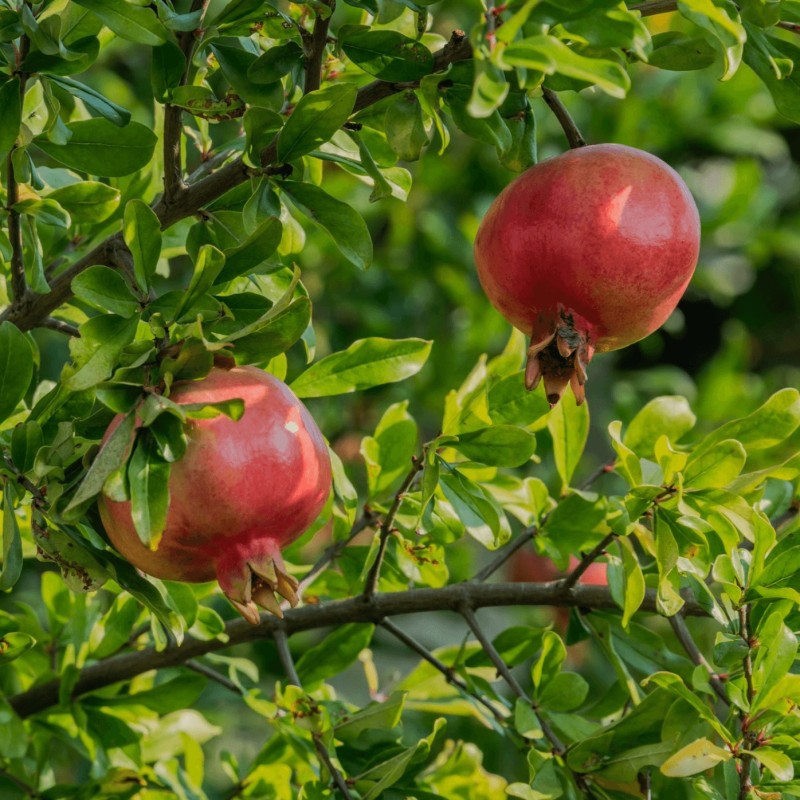The pomegranate (Punica granatum) is a fruit-bearing, deciduous shrub in the family Lythraceae, subfamily Punicoideae, that grows between 5 and 10 m (16 and 33 ft) tall. Rich in symbolic and mythological associations in many cultures, it is thought to have originated from Afghanistan and Iran before being introduced and exported to other parts of Asia, Africa, and Europe. It was introduced into Spanish America in the late 16th century and into California by Spanish settlers in 1769. It is widely cultivated throughout West Asia and the Caucasus region, South Asia, Central Asia, north and tropical Africa, the drier parts of Southeast Asia, and the Mediterranean Basin. The fruit is typically in season in the Northern Hemisphere from September to February, and in the Southern Hemisphere from March to May. The pomegranate and its juice are variously used in baking, cooking, juice blends, garnishes, nonalcoholic drinks, and cocktails.

